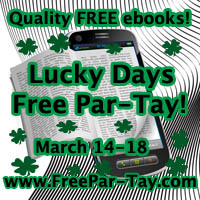 |
| Sarah J. McNeal, author |
Wyoming Factoids
and
Mother Featherlegs
(RTW note: To find out more about Sarah, read her interview and an excerpt from her book, For the Love of Banjo, in the previous post.)
. - .
Cool Factoids About Wyoming:. - .

- After the Japanese bombed Pearl Harbor in 1941, people of Japanese descent living on the Pacific Coast were relocated to the Heart Mountain Relocation Center in Wyoming.
- In 1925, Nellie Tayloe Ross was elected governor of Wyoming, becoming the nation's first woman governor.
- The restored Wyoming Territorial Prison in Laramie is a popular attraction for visitors with an interest in the Old West.
- Wyoming ranks second in wool production, and has over 810,000 sheep.
- The flag of Wyoming is a bison (or buffalo) with a seal on it. If you look closely at the seal, you will see that it represents the custom of branding.
- Wyoming was acquired as part of the Louisiana Purchase in 1803.
- Devils Tower was designated as the first National Monument (1906)
- Wyoming is the 9th largest state, but has the fewest people (475,000).
- Wyoming was the first state to give women the right to vote.
- Yellowstone is the first official National Park (1872)
- The JCPenney stores were started in Kemmerer.
- Cody Wyoming is named after William "Buffalo Bill" Cody.
- Statehood: July 10, 1890, the 44th state.
- Capital: Cheyenne
Mother Featherlegs
 |
Wyoming’s Monument to a Prostitute |
Out on the plains of eastern Wyoming is a lonesome monument dedicated to an American prostitute with the nickname, Featherlegs. Although the citizens must have felt a certain fondness for her, it wouldn’t seem that they would want to erect a monument in her honor. However, it seems that Featherlegs did have a part to play in the history of the old west.
. - .
. - .
Mother Featherlegs Shepard established a bordello on the silver Springs Road near Muskrat Canyon in 1876 and lonesome men seeking the comfort of female companionship frequented the rather shabby establishment.
. - .
. - .
Featherlegs gained her nickname because she wore lace trimmed red pantalettes that made her look like she had feathery chicken legs when she rode across the prairie with the lace fluttering in the wind. A customer commented that she looked like a feather-legged chicken and the nickname stuck. Her partner in running the saloon and brothel was an outlaw named Dangerous Dick Davis and many of his unsavory comrades frequented the establishment. They entrusted Featherlegs with their jewelry and large sums of money that she kept hidden for them until the miscreants could dispose of the goods.
. - .
Unfortunately, the glory days ended for Featherlegs in 1879. Mrs. O. J. Demmon, the wife of a Silver Springs rancher, found the auburn haired, middle-aged madam’s murdered body lying on the prairie next to the spring. Even though she must have lain there for several days, moccasin tracks like those Dangerous Dick wore, were found around her body. They buried her where she died. Dangerous Dick left the country and took with him the jewelry and money and took off for the swamps of Louisiana where he enjoyed continuing his lawless way. The long arm of the law caught up with him two years later and charged him with robbery and murder. He confessed to the murder of Featherlegs and gave her real name of Charlotte Shepard before they hung him.
Unfortunately, the glory days ended for Featherlegs in 1879. Mrs. O. J. Demmon, the wife of a Silver Springs rancher, found the auburn haired, middle-aged madam’s murdered body lying on the prairie next to the spring. Even though she must have lain there for several days, moccasin tracks like those Dangerous Dick wore, were found around her body. They buried her where she died. Dangerous Dick left the country and took with him the jewelry and money and took off for the swamps of Louisiana where he enjoyed continuing his lawless way. The long arm of the law caught up with him two years later and charged him with robbery and murder. He confessed to the murder of Featherlegs and gave her real name of Charlotte Shepard before they hung him.
In 1964 a 3,500 pound pink granite monument was erected with a reenactment of the Cheyenne-Deadwood stage run. The inscription reads:
“Here lies Mother Featherlegs, so called as in her ruffled pantalettes she looked like a feather-legged chicken in a high wind. She was a roadhouse ma’am. An outlaw confederate, she was murdered by ‘Dangerous Dick Davis the Terrapin’ in 1879.”
Her famous pantalettes were displayed on the monument during the reenactment but were stolen on the first day. In 1990, years later, the pantalettes were discovered in a Deadwood saloon. A “posse” of Lusk residents raided the saloon and got them back but, to prevent further theft, they decided to display them at the Stagecoach Museum in Lusk, Wyoming.
Just in case you’re interested, the monument to the prostitute is located ten miles south of Lusk on the old Cheyenne trail. I hope you have an off-road ready vehicle because the unpaved road can often be pitted with muddy ruts.
♥ ♥ ♥
Sarah will give away a copy of
or the revised edition of The Violin
(winner’s choice) to one lucky commenter. Be sure to include your email address or we'll hae to choose another winner. For print books, USA mailing only. Winner will be drawn Saturday, March 31, 2012, at 9pm Pacific Time and announced on Sunday's Chicken Dinner.
























